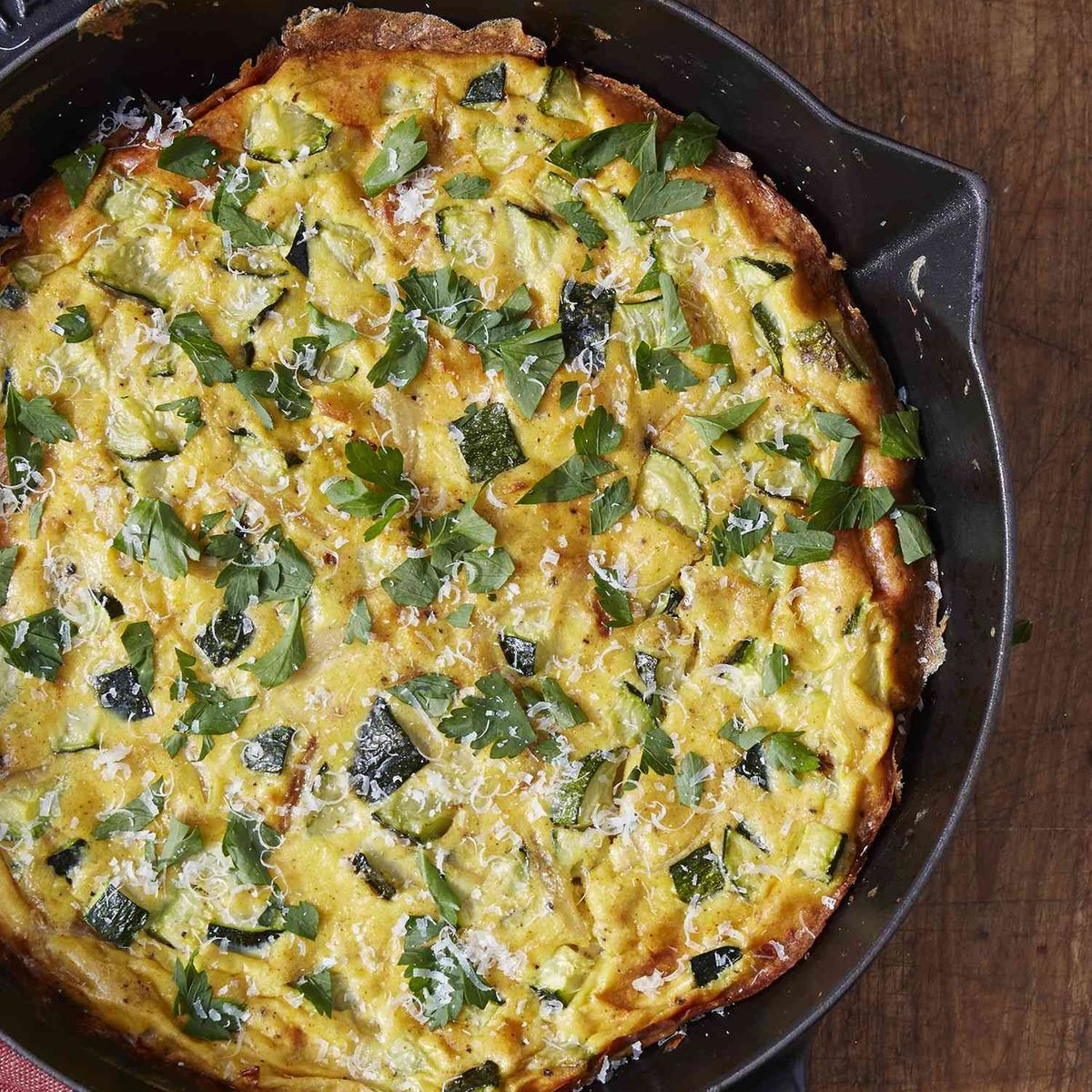If you’re stumped on what to make for dinner, a frittata is often a smart option. The fillings are flexible, it’s generally ready in less than a half hour, it can be served hot, warm, or at room temperature, and it makes excellent leftovers.
In this version, zucchini, onion, and Parmesan cheese come together for flavorful results. Though its peak season is summer, zucchini is available year-round—just be sure to pick out the best-looking squash. They should be firm (not spongy), vibrant in color, and free of blemishes. Cooking the squash before adding the egg mixture helps eliminate some moisture and helps give a nice crisp-tender texture to the creamy eggs and cheese.
While it bakes primarily in the oven, finishing the frittata under the broiler gives the top and outer edges a bit of crispness. Serve the dish with toast and fruit for breakfast or with a side salad and crusty bread for dinner.
What’s the difference between a frittata and a quiche?
A frittata and a quiche differ in key ways. Frittatas are made primarily with eggs and sometimes a little dairy. Quiches generally contain more dairy and fewer eggs. Also, quiches are usually made with crusts, like a pie, and they tend to take quite a bit longer to cook than a frittata, up to an hour. Plus, frittatas have their origin in Italy, and quiches come from France.
Frittatas and quiches are similar in that they are both egg-based dishes that can accommodate a variety of fillings, including meat, vegetables, and cheese.
What’s the difference between a frittata and an omelet?
Unlike a frittata, which cooks in the oven, an omelet is made entirely on the stove-top. Other differences include the number of eggs used—an omelet typically contains between one and three eggs, compared to 6 or more for most frittatas—and how the fillings are incorporated. In a frittata, the filling gets combined with the eggs before baking. In an omelet, the cooked eggs are typically folded over the filling. Omelets are also served immediately, while frittatas can be served hot, warm, at room temperature, or even cold.
What pan should I use for a frittata?
A classic cast-iron or even an enameled cast-iron pan is your best bet for this frittata recipe, for a few reasons. First, as everyone who has ever tried to scramble eggs in a stainless steel skillet knows, eggs are super-sticky, so a non-stick or cast-iron pan is ideal for frittatas in general. Second, since the frittata cooks in the oven, you’ll need an oven-safe pan, not one with plastic handles. Third, in this recipe, the frittata finishes under the broiler, which nixes traditional non-stick pans which aren’t broiler-safe. A cast-iron or enameled cast-iron pan are non-stick(ish) and oven and broiler-safe.
If you only have traditional non-stick pans, you can still make this recipe. Just skip the broiling step and continue to bake the frittata until it’s fully set on top.
Ingredients
1 tablespoon olive oil
1 cup yellow onion (about 1/2 medium onion), thinly sliced
3 cups chopped zucchini (from 2 medium zucchini)
2 ounces Parmesan cheese, grated (about ½ cup), divided
8 large eggs
¾ teaspoon kosher salt
½ teaspoon freshly ground black pepper
⅛ teaspoon paprika, preferably smoked
3 tablespoons chopped flat-leaf parsley
For Complete Cooking STEPS Please Head On Over To Next Page Or Open button (>) and don’t forget to SHARE with your Facebook friends

